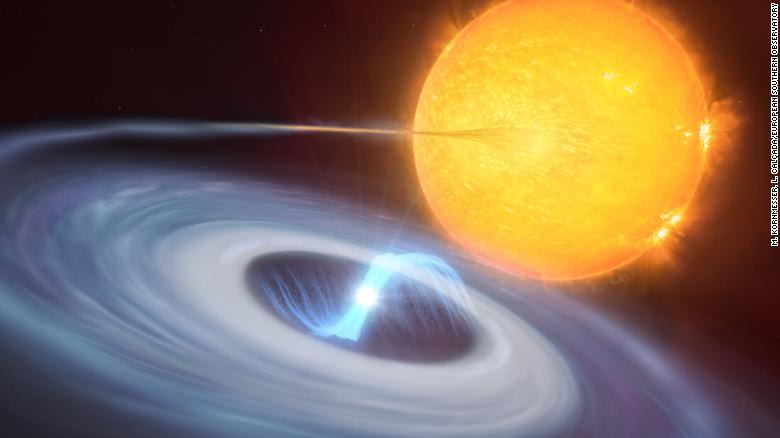Look at the route that this probe will make around the Sun 0:30
(CNN) --
Astronomers have discovered a new type of stellar explosion called a micronova.
Though smaller than the gigantic supernova explosions that ravage stars, this incendiary event still packs a punch.
Each micronova can burn "around 3.5 billion Great Pyramids of Giza" of matter (or 20,000,000 trillion kilograms) in a few hours, according to the researchers.
These extremely powerful outbursts can occur on the surface of white dwarfs, or dead stars as small as our planet, according to observations by a team of astronomers using the European Southern Observatory's Very Large Telescope in the Atacama Desert in Chile.
"We have discovered and identified for the first time what we call a micronova," study lead author Simone Scaringi, an astronomer and assistant professor at Durham University in the United Kingdom, said in a statement.
"The phenomenon challenges our understanding of how thermonuclear outbursts occur in stars. We thought we already knew this, but this discovery proposes an entirely new way."
The journal Nature published a study on Wednesday detailing these findings.
Hubble observes the most distant star ever seen and sends images to Earth
strong magnetic fields
White dwarf stars that are paired with other stars extract hydrogen from their companions, like zombies feeding on their sister stars.
When the gas meets the white dwarf's fiery surface, the hydrogen atoms fuse into helium, causing an explosion.
These events are known as novae.
advertising
"Such detonations cause the entire surface of the white dwarf to burn and glow brightly for several weeks," study co-author Nathalie Degenaar, an astronomer and assistant professor at the University of Amsterdam, explained in a statement.
Micronovae are smaller than typical novae and only last a few hours.
Micronovae explosions happen in white dwarfs with strong magnetic fields, which send matter toward the poles of the star.
This trajectory causes hydrogen fusion reactions to occur at more localized points at the magnetic poles.
This illustration shows a two-star system.
A blue disk of matter can be seen spinning around a white dwarf as it sucks material from a companion star.
"This leads to the explosion of microfusion bombs, with about a millionth of the force of a nova explosion, hence the name micronova," study co-author Paul Groot, an astronomer and professor at the University of California, said in a statement. of Radboud in the Netherlands.
Tracking intense but brief events
The research team detected the microbursts after reviewing data collected by NASA's Transiting Exoplanet Survey Satellite, or TESS mission.
The satellite is used to search for exoplanets, but it also scans nearby stars for planets around them.
First image from NASA's IXPE mission shows bright clouds surrounding a supernova
"Looking at astronomical data collected by NASA's TESS, we discovered something unusual: a bright flash of optical light that lasted for a few hours. Looking further, we found several similar signals," said Degenaar.
Two of the micronovae occurred on white dwarfs, and astronomers followed up on the third using the Very Large Telescope to confirm that it, too, was a white dwarf.
This allowed the researchers to declare that their observations uncovered something novel.
Now that micronovae are their own type of exploding star, the research team hopes to observe more of them to see how common they are, especially as they challenge current understanding of exploding stars.
"It just goes to show how dynamic the universe is. These events can actually be quite common, but because they're so fast, they're hard to catch in action," Scaringi said.
astronomysupernova

